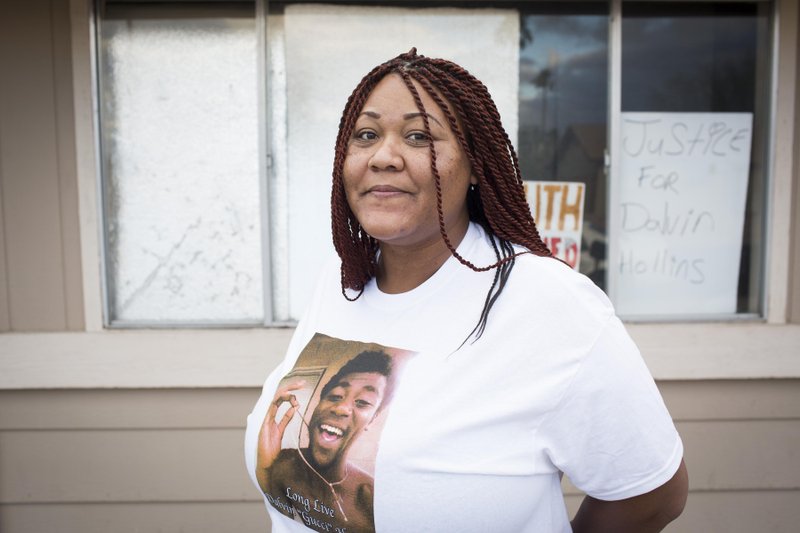The number of fatal shootings by officers in 2016 has remained virtually unchanged from last year, when nearly 1,000 people were killed by police.
Through Thursday, law enforcement officers fatally shot 957 people -- close to three each day -- according to an ongoing project by The Washington Post to track the number of fatal shootings by police. The number is down slightly from 2015, when 991 people were shot to death by officers.
Conversely, ambushes and other shootings across the country led to a sharp increase in the number of police killed in the line of duty this year.
Through Wednesday, 135 officers lost their lives. Some died in traffic accidents, but 64, or nearly half, were shot to death. That's a 56 percent increase in shooting deaths over the previous year.
[Read about recent fatal shootings by police across the country.]
Of those who were fatally shot, 21 were killed in ambush attacks. Those attacks were often fueled by anger over the police's use of force against members of minority groups.
"We've never seen a year in my memory when we've had an increase of this magnitude in officer shooting deaths," said Craig Floyd, president and chief executive of the National Law Enforcement Officers Memorial Fund. "These officers were killed simply because of the uniform they wear and the job they do. This is unacceptable to the humane society that we are."
In the count of fatal shootings by police, the Post, for two years in a row, has documented more than twice the number of fatal shootings recorded by the FBI.
As was the case in 2015, a disproportionate number of those killed this year were black, and about a quarter of the fatal shootings involved someone who had a mental illness. More of the fatal shootings this year were captured on video, compared with 2015.
Dozens of departments have vowed policy changes since the August 2014 killing of Michael Brown, 18, in Ferguson, Mo., opened a national debate over officers' use of force. Many agencies have equipped officers with body-worn cameras, with prominent police chiefs vowing to curb fatal encounters. But experts say any effect on fatal shootings may take years.
"Making these kinds of changes is very difficult on such a widespread scale," said Chuck Wexler, executive director of the Police Executive Research Forum, a Washington-based think tank pushing for national police reform. "But quite frankly, we're still on the front end of the training that we're pushing out. It may be at least six months to a year until we start to really see those numbers come down."
The Post began tracking fatal shootings by officers after the deaths of Brown and others during police encounters. The federal government does not comprehensively record how many people are killed by police annually, and it depends on voluntary reporting from police departments. The Post's database -- which will continue in 2017 -- largely relies on local news coverage, public records and social-media reports.
The consistency from 2015 to 2016 is telling, experts said.
"It shows that one year wasn't an anomaly," said Geoff Alpert, a criminology professor at the University of South Carolina. "It's a very robust number that is something we can trust in the future and a good measure to see when things do change."
This year, the Post gathered additional information about officers involved in fatal shootings, using media reports or news releases and filing more than 1,000 public-records requests from police departments involved in fatal shootings. One-fourth of the departments queried by The Post have not responded to the requests.
Many gave only partial information. Of those that responded, only a third of the departments provided the race of the officers involved in fatal shootings.
For the 811 officers about whom work information was disclosed or gathered, their average time on the job was nine years, and three-quarters of them were assigned to patrol. At least 60 officers who fatally shot someone this year had done so previously.
Among police fatally shot in 2016 were five Dallas officers killed by a sniper in July, the highest death toll among law enforcement authorities from a single event since the Sept. 11, 2001, terrorist attacks, which killed 72 officers.
Less than two weeks after the Dallas attack, a lone gunman in Baton Rouge shot and killed three officers and wounded three others outside a convenience store in the weeks after a black man, 37-year-old Alton Sterling, was shot and killed by police during a struggle.
Floyd, of the Officers Memorial Fund, said the effect of this year on law enforcement agencies has been profound. Agencies are struggling to recruit officers to their ranks, and those who continue to serve "talk about how their head is now on a swivel."
"They're always looking over their shoulder, always worrying about the next attack that could come at any time from any direction," Floyd said.
That was underscored by the slaying in November of a San Antonio detective who was fatally shot outside police headquarters as he was writing a traffic ticket. The man accused of shooting him said he was angry about a child-custody battle and simply "lashed out at somebody who didn't deserve it," authorities said.
Information for this article was contributed by Kimbriell Kelly, Wesley Lowery, Steven Rich, Julie Tate and Jennifer Jenkins of The Washington Post and by Lisa Marie Pane, Claudia Lauer and Mike Kunzelman of The Associated Press.
A Section on 12/31/2016

